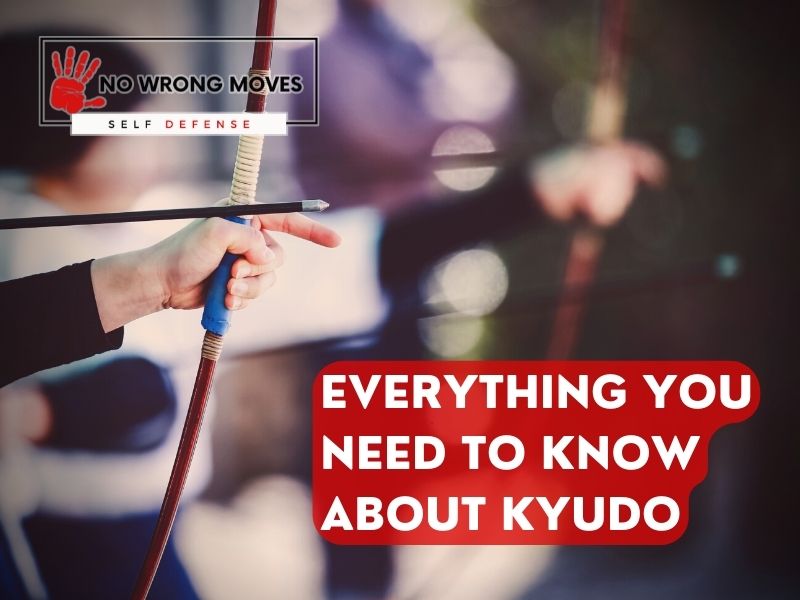
Welcome to the world of Kyudo! In this post, I will take you on a journey through the history, benefits, and levels of this traditional Japanese martial art. Kyudo, or "the way of the bow," is not just about shooting arrows, but also about developing a strong mind, body, and spirit.
From its origins in ancient Japan to the modern-day practice, Kyudo has been a profound source of discipline and self-awareness. In this article, we'll be delving into this rich martial art, and I'll be telling you everything you need to know about Kyudo.
What is Kyudo?
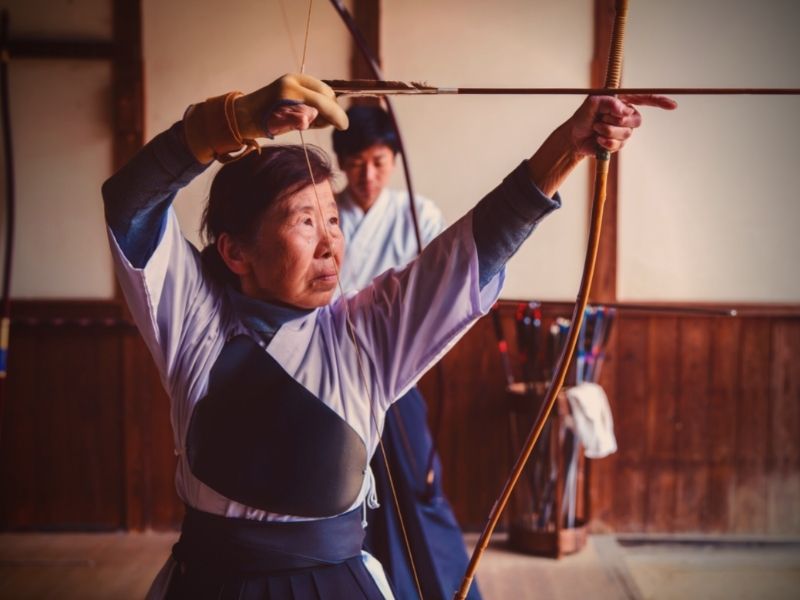
Kyudo, also known as the Japanese martial art of archery, has its roots in kyujutsu, the "art of archery" practiced by the samurai class of feudal Japan.
In 1919, kyujutsu was renamed kyudo, and it underwent a reorganization and integration of various forms of shooting for educational purposes, similar to other martial arts.
Those who have reached a high level of proficiency in kyudo may be called kyudoka, or Kyudo Master, while some practitioners refer to themselves as yumihiki, or "bow puller."
Kyudo is widely practiced around the world, with the International Kyudo Federation having over 132,000 graded members as of 2005.
Practitioners of kyudo use a bow called a yumi, which typically measures over 2 meters (6 feet, 7 incges) in length and has an asymmetrical shape. The archer holds the part of the bow below the center to shoot the arrow, making it a unique and fascinating art to observe and practice.
Where Does Kyudo Come From?
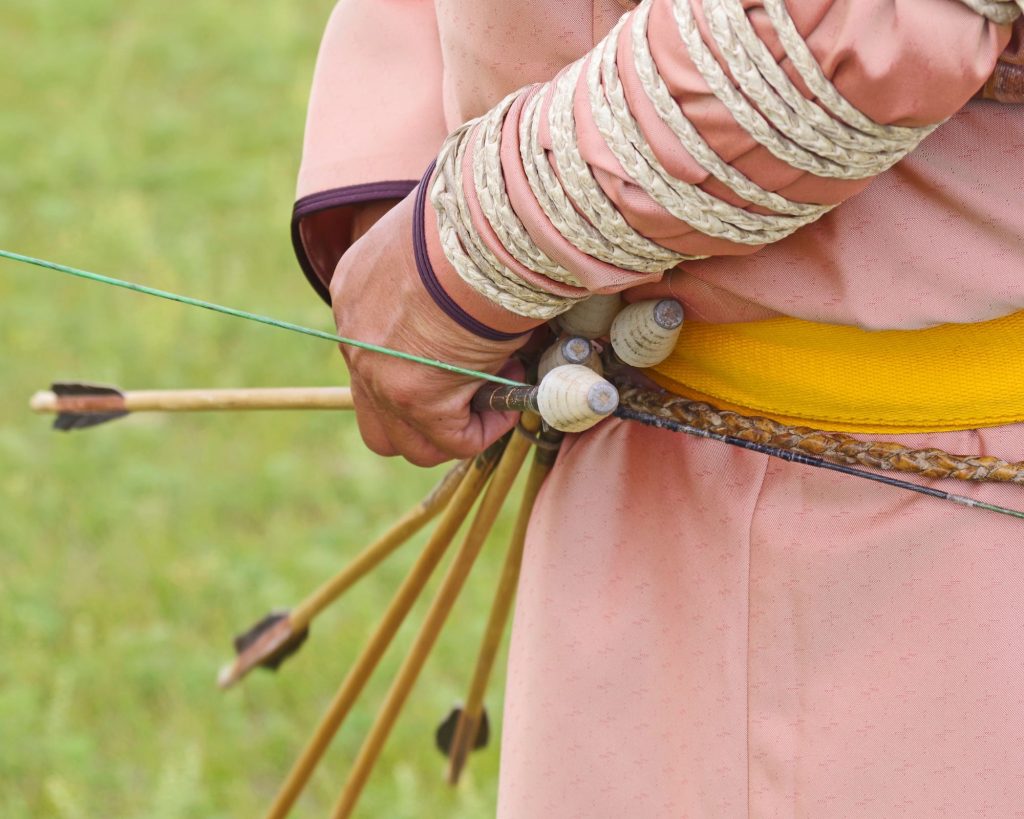
Long before guns and bullets, there were bows and arrows. And in Japan, the practice of archery has been deeply embedded in their culture and history for over a thousand years.
One of the oldest martial arts in Japan, Kyudo, has been passed down through the generations and continues to be practiced to this day.
Kyudo, also known as the way of the bow, originated from the use of the bow and arrow in hunting and warfare.
It is believed that the first recorded use of archery in Japan dates back to the 4th century, with the arrival of the Yayoi people. But it was during the Heian period (794-1185) when the samurai began to use the bow and arrow as a form of martial art.
Kyudo was not only used for combat, but also as a means of spiritual practice. The samurai saw archery as a way to cultivate discipline, focus, and inner peace.
It was during the Edo period (1603-1867) that Kyudo began to be taught as a formal discipline, with the establishment of various schools or "ryu" that focused on different techniques and philosophies.
Kyudo has continued to evolve over the centuries, with the introduction of new equipment and techniques. In 1953, the International Kyudo Federation was founded, with the aim of promoting Kyudo around the world and preserving its traditional values.
Today, Kyudo is not just a martial art, but also a form of meditation and spiritual practice. It is a way to connect with oneself and with nature, and to cultivate discipline, patience, and mindfulness.
Through the practice of Kyudo, one can learn to shoot not just with the body, but also with the mind and spirit.
Benefits of Kyudo

I really do genuinely think we overlook the simple things in life sometimes. For instance, have you ever thought about the way you sit? Your posture can have a significant impact on how you feel and how others perceive you.
By practicing good posture, you can not only alleviate back pain, but also improve your self-confidence and overall well-being. And guess what? Kyudo can help you with that.
But the benefits don't stop there. Through this practice, you can also experience an increase in concentration, which can lead to greater productivity and success in your daily life. You may even find yourself becoming more disciplined, able to stick to tasks and goals with ease.
And let's not forget about the emotional benefits. In a world that can often feel chaotic and overwhelming, we'll need to find ways to cultivate a sense of calm and focus. This practice can provide just that, allowing you to navigate stressful situations with more ease and grace.
Perhaps most importantly, Kyudo can lead to improved self-control. As you become more aware of your body and your thoughts, you may find yourself better equipped to make choices that align with your values and goals.
How to get started in Kyudo
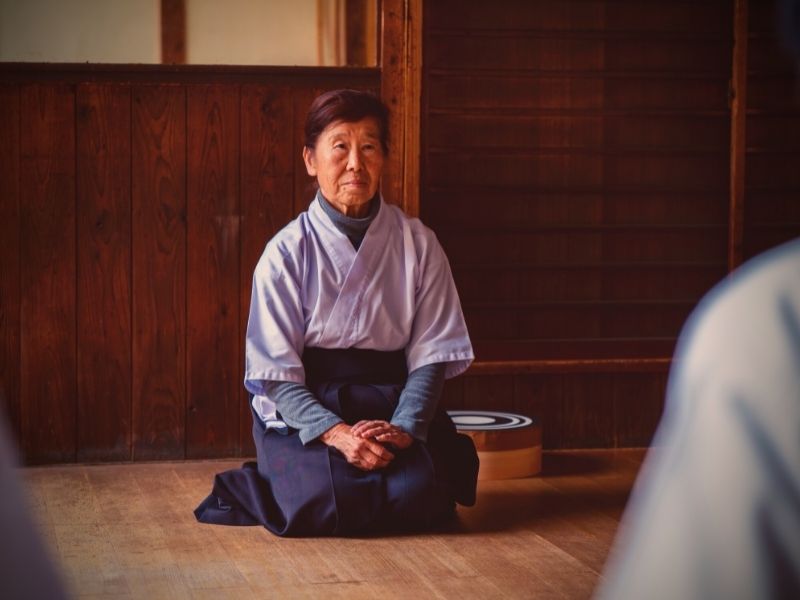
- Research different Kyudo schools and find one that aligns with your goals and beliefs.
- Attend a trial class to see if the school and instructors are a good fit for you.
- Begin learning the basic techniques, principles, and forms of Kyudo under the guidance of a qualified instructor.
- Practice consistently to improve your technique and understanding of Kyudo principles.
- Continually challenge yourself by attending workshops and seminars, sparring with other practitioners, and seeking new opportunities for growth within the Kyudo community.
- Watch and study Kyudo masters to gain inspiration and new insights into the art.
- Always approach your practice with humility and an openness to learning.
Different Kyudo Ranks And Levels
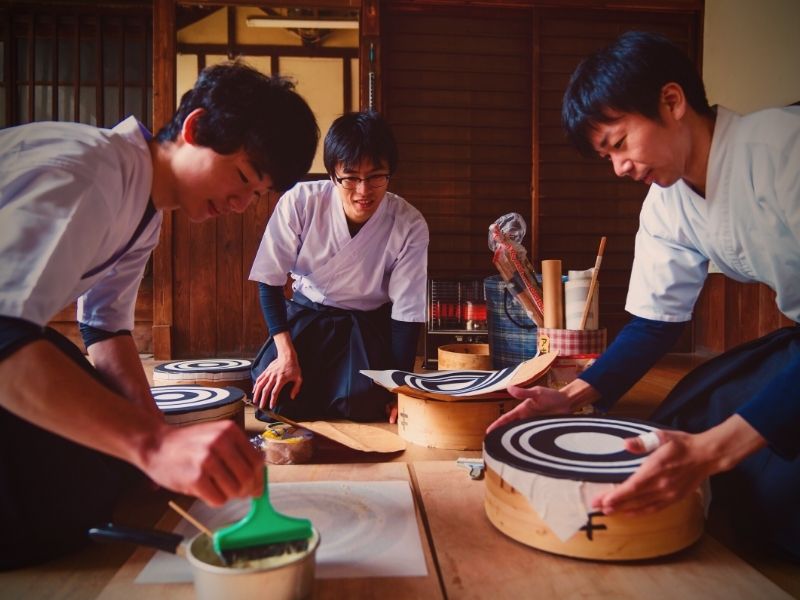
In most Western kyūdō schools, a familiar grading system common to modern martial art practices is implemented. Periodic examinations are held, and a successful performance can result in the granting of a kyū or dan level.
However, traditional schools have retained the older menkyo (license) system of koryū budō, ranking students based on their achievement.
In Japan, it's fairly typical for high school and college students to pursue and achieve kyū ranks, with adults often skipping the kyū levels and advancing straight to the first dan.
The dan testing process occurs infrequently and is typically held by the prefecture kyūdō federation. Prospective archers may need to travel to the prefecture capital or a large city for the test, which can last up to 6 to 8 hours.
Conversely, kyū ranking tests are more frequent, held at schools, and usually do not require extensive travel. While kyūdō shares similarities in its kyū and dan level structure with other budō practices, practitioners do not wear colored belts or other external symbols of their level.
The Importance of A Good Kyudo Instructor
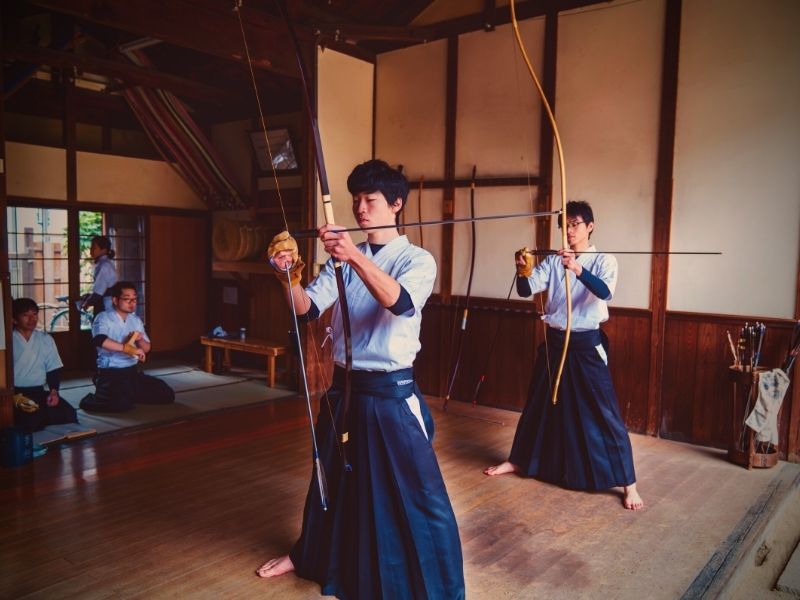
Choosing a good Kyudo teacher is important because they will be the one that is instructing you on how to properly do the techniques. It is important to find someone who has a lot of patience, because it takes time to learn all the different techniques.
A good teacher will also be able to motivate their students to want to learn and excel in Kyudo. They should also be able to provide feedback so their students can improve.
Finding a good Kyudo teacher can be the difference between enjoying learning and excelling in Kyudo, or becoming frustrated and quitting.
And we're serious about that: choosing someone who is a poor teacher can lead to bad habits that are difficult to break, and they can make Kyudo seem more like a chore than something enjoyable.
Taking the time to find a good Kyudo teacher is well worth it, and it can make all the difference in whether or not someone enjoys learning Kyudo.
Some Movies With Kyudo
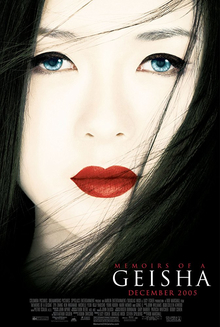
Some of the best movies with Kyudo in them are:
- Kagemusha (1980)
- The Way of the Bow (2007)
- Memoirs of a Geisha (2005)
- 13 Assassins (2010)
Kyudo is also often featured in Japanese dramas and television shows. One popular example is NHK's Taiga drama, Yae no Sakura (2013), which follows the life of Kyudo master and heroine Yae Ochiai.
Overall, Kyudo offers a unique glimpse into traditional Japanese culture and its themes of honor, discipline, and grace resonate with audiences all over the world.
Most Notable Figures In Kyudo
And, just in case you wanted to do some more research, here are some notable figures who practice or have practiced X
These are some notable figures who have practised Kyudo:
- Emperor Showa (Hirohito)
- Emperor Emeritus Akihito
- Prince Naruhito
- Princess Masako
- Princess Takamado
- Sasaki Kojiro, revered as the "Crow Master" and considered the greatest Kyudo archer in history
The Wrap-Up
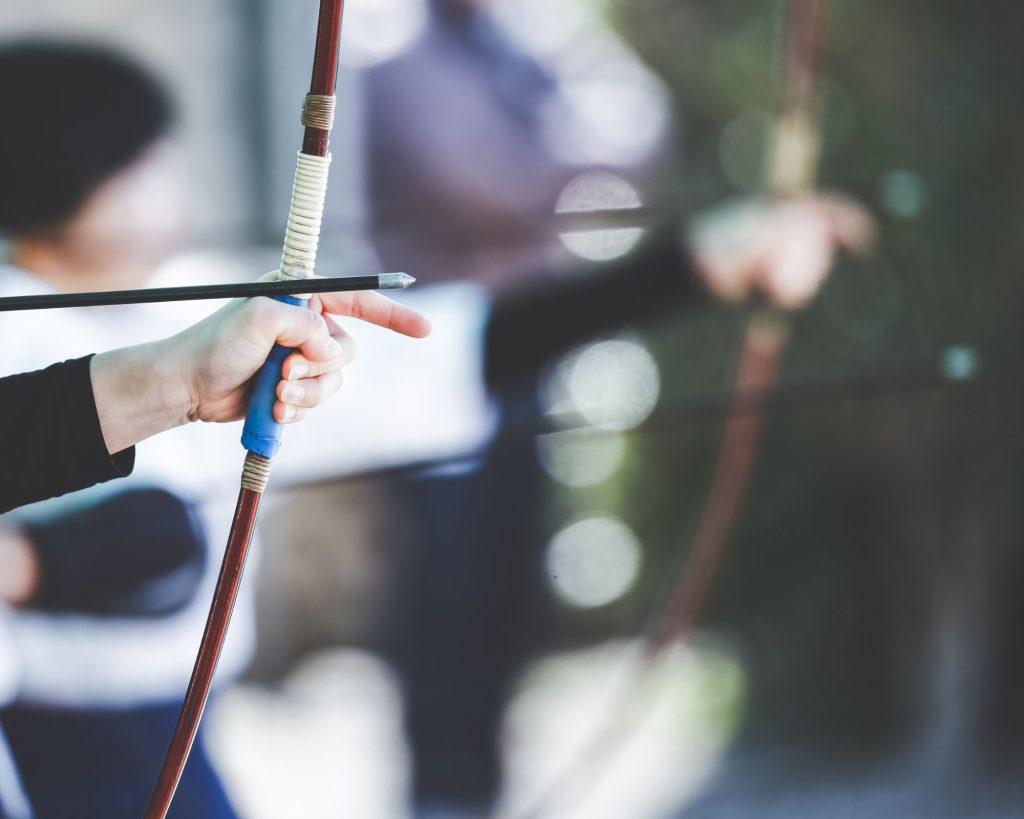
Kyudo is not just a form of archery, but a way of life. Through its practice, individuals can learn to cultivate a sense of inner peace, discipline, and respect.
With a rich history dating back centuries, Kyudo is deeply rooted in Japanese culture and has become a beloved practice for many across the globe.
From the intricacies of the bow and arrow to the proper etiquette and attire, Kyudo is a complex and multifaceted art form that requires a lifetime of dedication and practice. With each shot, practitioners can learn to let go of their fears and embrace the present moment.
So take a deep breath, center yourself, and let your arrow fly. The path of Kyudo awaits you!
Check out Bujutsu next here!
[author-box-jpx-fitness]
